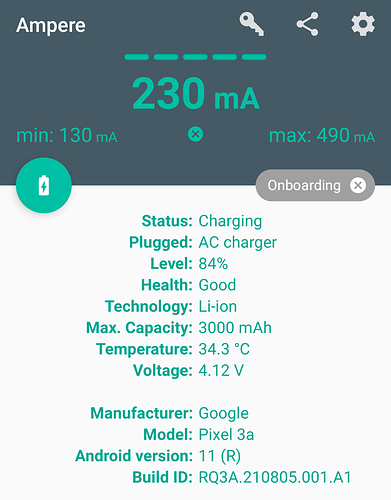Not able to ssh in while it’s powered from the Qi charger. I used a battery monitor on my phone to see what kind of current the Qi charger is outputting. Here’s the conditions when I hook my phone up to a standard AC/DC adapter
Here’s the conditions when I hook it up to the Qi charger with a USB-A port attached
It looks like the current limit (which I had planned to be around 750mA) is actually turning out to be too low for the VoCore to get fully booted up. Maybe I can change the ILIM resistors (R4 and R5). Regardless the Qi receiver chip gets a bit warm. I’m not certain if having it inside the body will be good or bad for heat dissapation (I’m thinking good).


